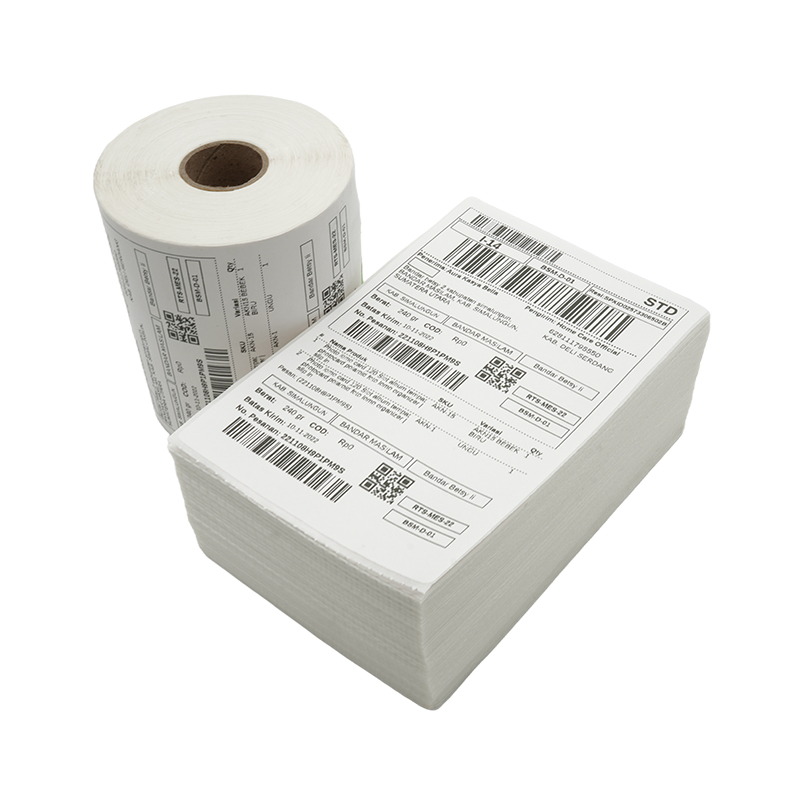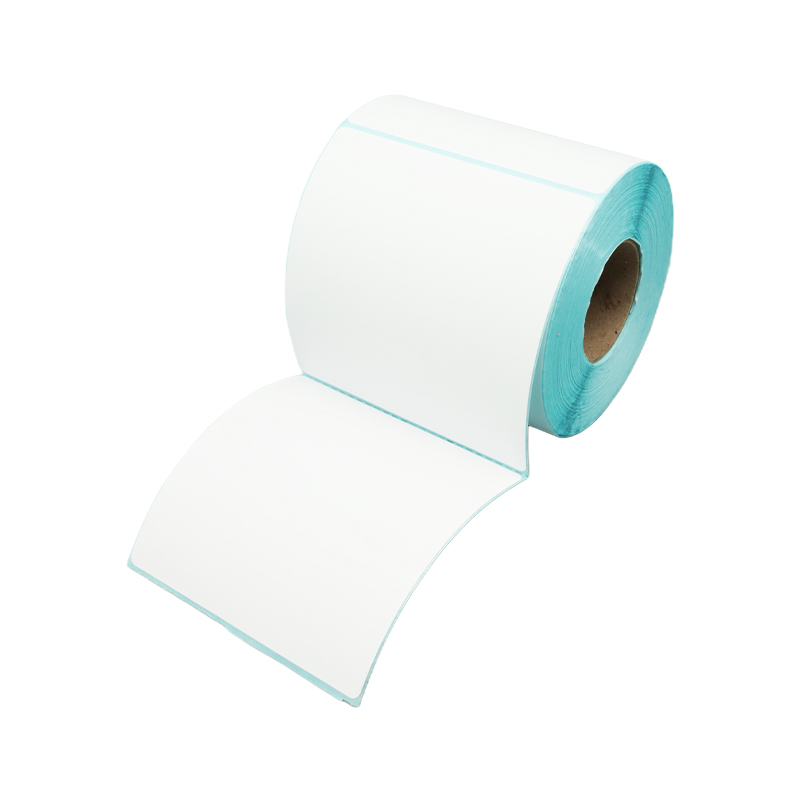How does grid thermal tag paper improve batch printing and peeling efficiency through its pre-cut design?
Release Time : 2025-08-21
In the high-speed operations of modern logistics, e-commerce delivery, and warehouse management, every second of efficiency improvement directly impacts the overall operational pace. Label printing, a critical step in package handling, requires speed and smoothness. Thanks to its unique pre-cut design, grid thermal tag paper significantly improves batch printing and peeling efficiency without relying on complex equipment, becoming a hidden enabler for efficient labeling.
The core of the pre-cut design is to pre-cut the entire roll of label paper horizontally or vertically, creating individual or semi-connected label units. This structure allows each label to separate naturally after printing without requiring additional cutting. Traditional continuous paper labels often require manual tearing or automatic cutting after printing, which not only increases equipment costs but also can easily affect aesthetics and scannability due to uneven cutting. Pre-cut grid labels, on the other hand, have clear edges the moment they are ejected. Operators simply pull the labels off smoothly, significantly reducing the time required for a single labeling session.
This efficiency advantage is further amplified in batch printing scenarios. When the printer continuously outputs labels for multiple orders, the pre-cutting mechanism ensures that each label lands precisely in the designated position, preventing misalignment caused by paper stretching or feed deviation. After printing, a row of labels is neatly aligned, with aligned edges and visually clear. Operators can use a "continuous peeling" technique, pulling the roll with one hand and gently peeling it with the other, to quickly and continuously tear off labels, creating a streamlined labeling process. This continuous peeling reduces hand pauses and adjustments, ensuring a more streamlined and controlled packaging process.
The grid lines also provide visual and tactile guidance. The gaps between the labels form a regular grid of back lines, acting like a coordinate system, helping users quickly locate the print area and ensure that the barcode, order number, and delivery information are completely within the label. Even at high-speed printing, this effectively prevents clipping or overlapping of content. For labels with micro-dot connections that haven't been completely cut, the grid lines provide a clear tearing direction, preventing tearing or label residue due to improper pressure.
The pre-cut design also optimizes the user-machine interface. Label edges are rounded or flattened, with a slightly flared or tear-off notch at the beginning for easy finger insertion. The peeling process is smooth and frictionless, eliminating the need for fumbling or excessive force, reducing hand fatigue during extended work. For applications using handheld printers or semi-automatic labeling equipment, the pre-cut design reduces the risk of paper jams and misfeeding, improving operational stability.
Pre-cut labels also offer more orderly stacking and storage. With clear boundaries between each label, rolls are less likely to stick or become misplaced during rewinding and handling. They can be used directly on the machine after unpacking, eliminating the need for additional handling. In high-volume, multi-shift warehouse environments, this "ready-to-use" design reduces setup time and ensures operational continuity during shift changes.
Finally, the pre-cut design of grid thermal tag paper minimizes redundant steps in the "print-separate-label" process. It relies on no electricity or complex machinery, achieving a substantial improvement in efficiency through its clever physical design. In logistics sites that process tens of thousands of packages daily, this seemingly subtle design is silently supporting the high-speed operation of the entire system, making information transmission faster, more accurate, and more relaxed.
The core of the pre-cut design is to pre-cut the entire roll of label paper horizontally or vertically, creating individual or semi-connected label units. This structure allows each label to separate naturally after printing without requiring additional cutting. Traditional continuous paper labels often require manual tearing or automatic cutting after printing, which not only increases equipment costs but also can easily affect aesthetics and scannability due to uneven cutting. Pre-cut grid labels, on the other hand, have clear edges the moment they are ejected. Operators simply pull the labels off smoothly, significantly reducing the time required for a single labeling session.
This efficiency advantage is further amplified in batch printing scenarios. When the printer continuously outputs labels for multiple orders, the pre-cutting mechanism ensures that each label lands precisely in the designated position, preventing misalignment caused by paper stretching or feed deviation. After printing, a row of labels is neatly aligned, with aligned edges and visually clear. Operators can use a "continuous peeling" technique, pulling the roll with one hand and gently peeling it with the other, to quickly and continuously tear off labels, creating a streamlined labeling process. This continuous peeling reduces hand pauses and adjustments, ensuring a more streamlined and controlled packaging process.
The grid lines also provide visual and tactile guidance. The gaps between the labels form a regular grid of back lines, acting like a coordinate system, helping users quickly locate the print area and ensure that the barcode, order number, and delivery information are completely within the label. Even at high-speed printing, this effectively prevents clipping or overlapping of content. For labels with micro-dot connections that haven't been completely cut, the grid lines provide a clear tearing direction, preventing tearing or label residue due to improper pressure.
The pre-cut design also optimizes the user-machine interface. Label edges are rounded or flattened, with a slightly flared or tear-off notch at the beginning for easy finger insertion. The peeling process is smooth and frictionless, eliminating the need for fumbling or excessive force, reducing hand fatigue during extended work. For applications using handheld printers or semi-automatic labeling equipment, the pre-cut design reduces the risk of paper jams and misfeeding, improving operational stability.
Pre-cut labels also offer more orderly stacking and storage. With clear boundaries between each label, rolls are less likely to stick or become misplaced during rewinding and handling. They can be used directly on the machine after unpacking, eliminating the need for additional handling. In high-volume, multi-shift warehouse environments, this "ready-to-use" design reduces setup time and ensures operational continuity during shift changes.
Finally, the pre-cut design of grid thermal tag paper minimizes redundant steps in the "print-separate-label" process. It relies on no electricity or complex machinery, achieving a substantial improvement in efficiency through its clever physical design. In logistics sites that process tens of thousands of packages daily, this seemingly subtle design is silently supporting the high-speed operation of the entire system, making information transmission faster, more accurate, and more relaxed.







